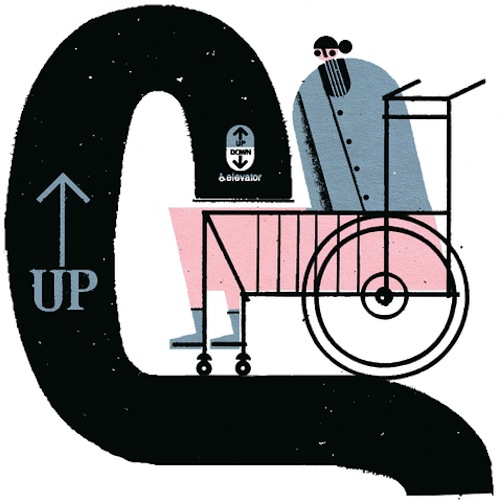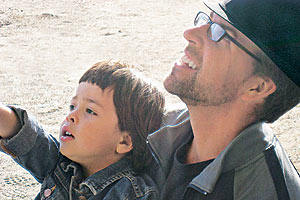The following originally appeared in Dwell magazine as part of a symposium on universal design; interested readers might check out the symposium's introduction to the topic. We are republishing it to complement both our Shareable Futures series and the entry "Designing for Oliver," posted today.
Integration Disorder
Richard Ellenson is “Chief Vision Officer” at DynaVox Mayer-Johnson, a company that makes communication devices for people who cannot speak.
For individuals with disabilities, universal design cannot simply provide access; it must provide cues to help others see the true nature of an individual. Imagine a wheelchair elevator looking not like a forklift but like a maestro rising to a stage. Envision Braille dots on an elevator, colored like a Mondrian, so they indicated lightened shades of blue at higher floors – visible only to the sighted.
They say form is the first indicator of function. And yet, for anyone with disabilities, form is a notorious and unforgivable bastard. A product must find common inspired ground and then address the specific challenge itself.
Bionic Man
Steve Wilcox is founder of Design Science, a Philadelphia consultancy specializing in design research.
One thing we know about the future is that whatever we say about it is probably wrong, as the “history of the future” demonstrates, so here goes.
I think “universal design” will go away in favor of DFN, or “design for nats” (or “naturals”). The target group for DFN will be all the wretched “nats” who can’t afford the assistive products of the future—–implanted and external to the body—–that will make those who can afford them smarter, faster, stronger, etc., and will relegate those who can’t afford them, i.e., nats, to the category of “disabled.”
The disabled nats will include people akin to today’s geniuses and athletes, who, sadly, won’t be able to see through walls, do calculus in their heads, pick up boulders, or leap ten meters. Only a few do-gooder designers will pursue DFN, because few will worry about people who can’t even afford brain implants.
Ghost in the Machine
Hugh Herr is head of biomechatronics at the MIT Media Lab, where he works on intelligent prosthetic limbs.
A fundamental theory of universal design has not yet been conceived. The true effectiveness of such a theory hinges on its grounding within biological science. A representation of the human technological user, including all nuances of ability and disability, will enable technologies of the future to respond appropriately to the real-time needs of the user. Only when technology is able to think, feel, and move as we do will a seamless, collaborative interaction occur between humans and machines.









